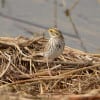 By Jim Stevenson
By Jim Stevenson
This is a gallery on sparrows we saw across the Great Plains. This will be in honor of Alice Ann, who loves and studies sparrows like few I know. She also helps others more than almost nobody I know, and I have known her goodness. On the humorous side, I have been meaning to track down a couple in the South Island I am very fond of, but HAVEN’T BEEN ABLE TO REMEMBER THEIR LAST NAME! I just got an e-mail from them. It’s “Stevenson.”
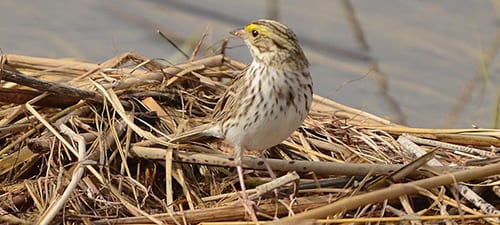
Savannah Sparrow: Winters all over the South and breeds over much of the northern tier
of the Lower 48. Streaked with yellow spot called “lore” in front of the eye. Often has a
hint of a breast spot, makes chips frequently. Prefers fields to wooded areas and is often
seen flying off roadsides.
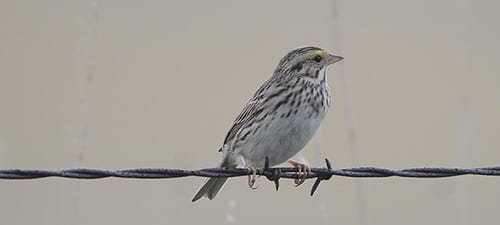
Baird’s Sparrow: Smaller but similar to Savannah. Breeds very locally in Eastern
Montana and Western North Dakota, winters mostly in Mexico but may be found on
“Sparrow Hill” in SE Arizona. Very secretive in winter and has been seen in West Texas.
This is another of the small Ammodramus sparrows that are so hard to nail down.
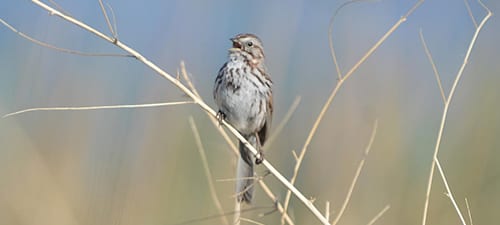
Song Sparrows are found in a variety of races all over the Continent, but are strangely
rare on the UTC (except Anahuac NWR, which also has White-crowned commonly).
Here’s a breeding bird singing away, either trying to attract a mate or keep her happy.
Their songs, BTW, actually stimulate egg development. ID this large species by the long,
reddish tail, the chest spot and the unique facial pattern.
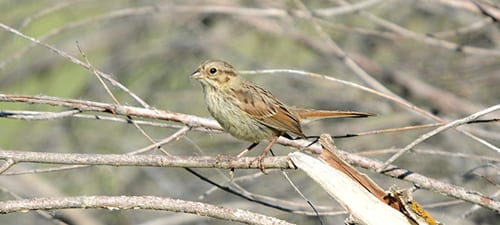
Young Song Sparrows are a bit trickier but note the long, reddish tail and the facial
pattern similar to the adult (but more buffy). We don’t have to deal with these as they
don’t breed in the South, but IDing juvenile birds is a recurring problem when birding in
strange places in the breeding season.
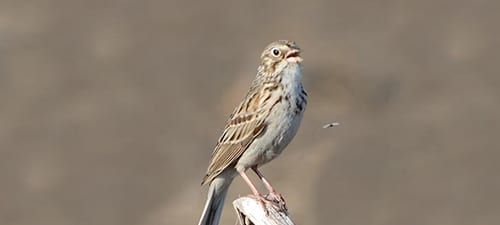
Vesper Sparrows are large birds that live in open fields and grasslands. This male is
singing away and actually has a fly buzzing in front of him. Note the sparrow’s white
eyering, longish tail with white outer feathers and the reddish patch at the bend of the
wing. These western birds don’t have the buffy flanks that more eastern ones sport.
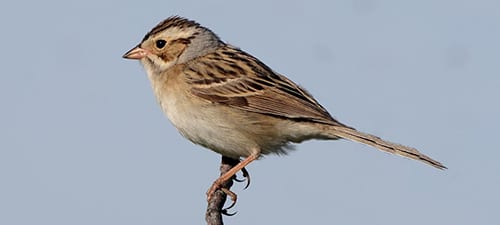
Clay-colored Sparrows are small, but abundant and fairly conspicuous. They resemble
Chipping Sparrows a bit but they lack the reddish crown. The gray collar is surprisingly
conspicuous, along with the little, p inkish beak. It’s nice dealing with them in the warm
breeding season coz in winter plumage they are a bear to tell from chippies!
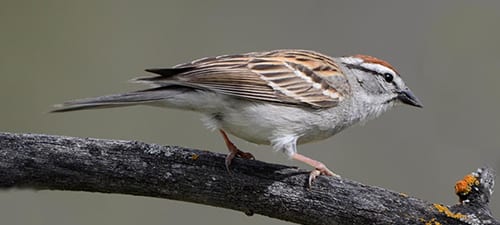
These Chipping Sparrows are abundant back East and just scattered around in the West.
Their reddish cap is a dead giveaway and they are a fairly colorful little sparrow anyway.
This species isn’t real common on the UTC but wherever they are found, they are often
seen flushing off roadsides in small f locks, perching in nearby trees.
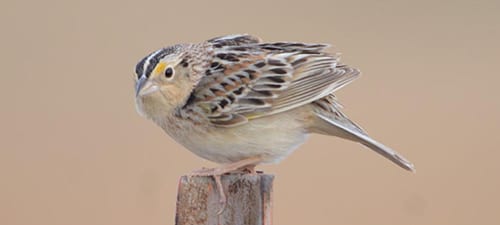
The genus Ammodramus contains quite a few small sparrows that are often hard to see,
as they flit through high grass and disappear. However, in the breeding season, males are
advertising themselves, singing off of the best perch they can find. These Grasshopper
Sparrows have no real streaking below and an unmarked face with a white eyering and
median stripe.
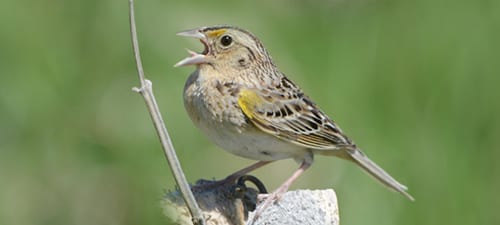
This ‘hopper has a great perch to get the word out!
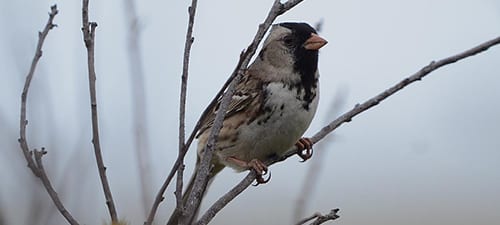
A late migrant seen in Oklahoma was this Harris’ Sparrow, our largest of the family. The
black face is the best field mark, and we occasionally get this species west of Houston, in
the grasslands like around Eagle Lake. This is a surprising feeder bird on occasion, even
being seen in Florida on rare occasion. Good luck seeing them on their breeding grounds!
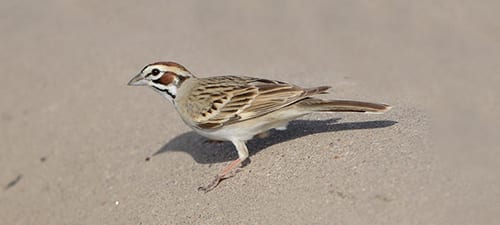
Lark Sparrows are large, handsome birds with a head a quail would be jealous of. Those
ruptive marks actually help the head not to be noticed, and gives them a kind of har lequin
appearance. These wander back East frequently and may show up very early in fall, with
late July records having been recorded in Florida.
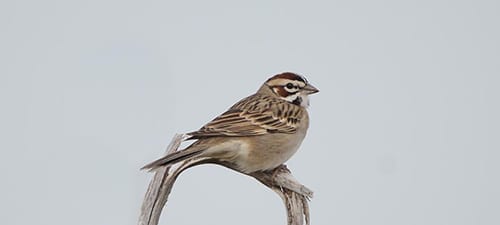
This was a really heavy one.
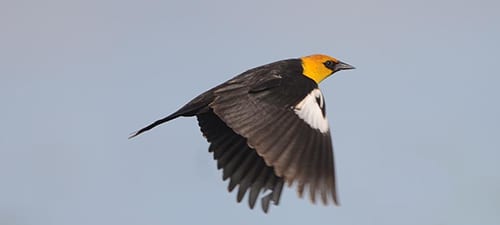
And I finish out the abbreviated PDF with three YHBB shots, which after all, IS an
abbreviation. This is the Republican, flying to the right…
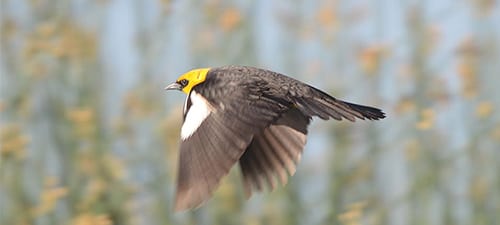
And the Democrat, ardently showing his left wing…
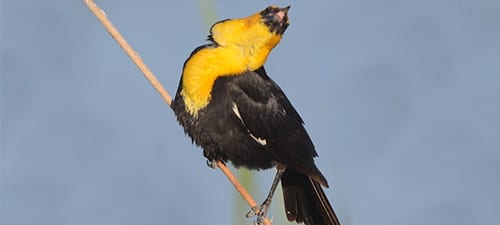
And the middle-of-the-road bird, singing coz he knows he sways all elections.
Nice birds, eh?

 Posted in
Posted in 























